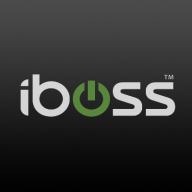


Appgate SDP and Fortinet FortiGate are competing products within the network security domain, both offering robust security solutions. Appgate SDP has the upper hand in security infrastructure and integration, while Fortinet FortiGate is perceived to be stronger in features and value.
Features: Appgate SDP is recognized for its dynamic, identity-centric security model, seamless support for hybrid environments, and emphasis on access control and agility. Fortinet FortiGate offers a comprehensive set of features, with advanced threat protection, extensive firewall capabilities, and a feature-rich experience that supports a variety of security tools.
Room for Improvement: Appgate SDP could enhance its user interface to be more intuitive and provide more straightforward documentation to simplify deployment and management. Additionally, a reduction in setup costs would make it accessible to a wider range of businesses. Fortinet FortiGate can improve by enhancing integration capabilities with third-party tools, refining its reporting features to offer more detailed insights, and expanding its customer support to assist with complex technical issues.
Ease of Deployment and Customer Service: Fortinet FortiGate generally offers a straightforward deployment process with robust customer support, making it favorable for businesses seeking quick implementation and guidance. Appgate SDP's deployment is also managed smoothly but is best suited for environments requiring extensive customization and integration. Appgate SDP shines in environments valuing specialized security setups, while Fortinet FortiGate is preferred for its ease of use and accessible support.
Pricing and ROI: Appgate SDP's setup costs are generally higher, reflecting its value in complex, high-security environments with a focus on long-term ROI through reduced security breaches. Fortinet FortiGate offers competitive pricing, often seen as delivering quicker ROI due to its comprehensive feature set and lower initial investment. For those prioritizing budget, Fortinet FortiGate presents a more economically balanced choice, whereas Appgate SDP caters to organizations seeking a premium, tailored security experience.



| Company Size | Count |
|---|---|
| Small Business | 6 |
| Midsize Enterprise | 6 |
| Large Enterprise | 5 |
| Company Size | Count |
|---|---|
| Small Business | 4 |
| Midsize Enterprise | 1 |
| Large Enterprise | 3 |
| Company Size | Count |
|---|---|
| Small Business | 350 |
| Midsize Enterprise | 129 |
| Large Enterprise | 187 |
iboss offers a comprehensive security platform designed for diverse use cases such as web filtering, data loss protection, corporate proxy services, and URL filtering.
iboss integrates advanced features to address dynamic security needs, leveraging its strength in SASE, ZTNA, AI initiatives, and cloud integration, while ensuring seamless operations for remote work. It excels in historical forensics, malware protection, and flexible cloud deployments. Users benefit from comprehensive traffic scanning, robust malware detection, and PaaS capabilities that reduce hardware management. An intuitive admin console ensures efficient management with content filtering and low false positives. SSL decryption enhances security, while DLP protects data in AI conversations. Deployment is rapid and scalable, allowing effortless integration with emerging technologies.
What features does iboss offer?
What benefits and ROI should users consider?
iboss finds significant application in sectors such as education, where web filtering for K-12 is crucial, and in corporate environments requiring robust proxy services and URL filtering for network security. Its adaptability is essential in scenarios demanding flexible, decentralized security frameworks, particularly for remote work setups.
Appgate SDP is a network access control tool for local and remote access, multifactor authentication, and micro-segmentation. It is a flexible, robust, and configurable tool with good documentation, interface improvements, and ease of deployment.
It helps organizations prevent lateral movement across networks and servers and provides a more granular access control structure than traditional VPNs. Appgate SDP's valuable features include the ability to hide servers, good support, stability, scalability, and stopping lateral movement. It is currently being used as the main VPN solution for many companies.
Fortinet FortiGate excels in providing integrated VPN, firewalling, and Unified Threat Management (UTM) with centralized management and high availability. It supports remote access and comprehensive threat protection, making it a preferred choice for securing networks.
Fortinet FortiGate offers a robust security platform with features such as strong intrusion prevention, application control, and web filtering. Its integration with Active Directory and SD-WAN functionality provides scalable solutions for large networks. Users appreciate its ease of use through centralized management interfaces, ensuring robust security with flexible configurations. However, FortiGate could enhance its graphical interface and technical support responsiveness, address firmware bugs and costly licensing, improve logging, integrate better with third-party tools, and strengthen scalability and memory for log storage. Complexity in configuration and the need for intuitive features are noted challenges, and there's a demand for advanced security, zero-trust capabilities, and AI integration.
What are the key features of Fortinet FortiGate?Fortinet FortiGate is widely implemented across industries like education, finance, and government. Companies use it for firewall protection, VPN, and SD-WAN capabilities, ensuring secure perimeter and data center security. It facilitates remote access management and traffic routing optimization, offering reliable security and connectivity solutions.
We monitor all ZTNA reviews to prevent fraudulent reviews and keep review quality high. We do not post reviews by company employees or direct competitors. We validate each review for authenticity via cross-reference with LinkedIn, and personal follow-up with the reviewer when necessary.